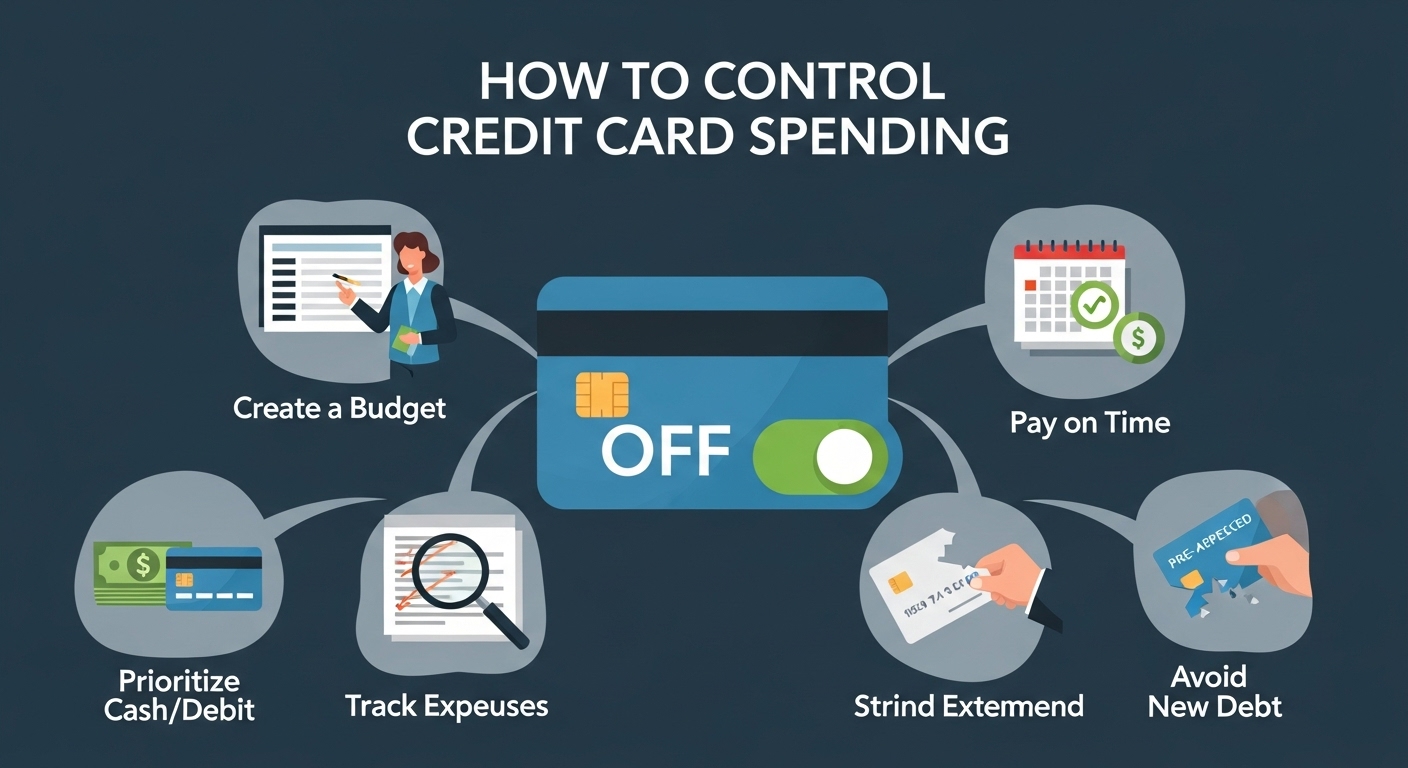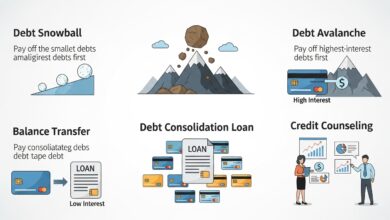How to Control Credit Card Spending

Credit cards can be powerful financial tools — offering convenience, security, and even rewards. But if not managed wisely, they can quickly turn into a source of debt and financial stress. Learning how to control your credit card spending is one of the most important steps toward achieving financial stability and maintaining a healthy credit score.
In this guide, we’ll explore practical strategies, budgeting techniques, and psychological tips to help you take control of your credit card use — instead of letting it control you.
1. Understand Your Spending Habits
Before you can control your spending, you need to know where your money is going.
- Track every transaction: Review your credit card statements regularly or use a budgeting app that automatically categorizes your expenses.
- Identify spending patterns: Are you spending too much on dining, online shopping, or entertainment?
- Set realistic limits: Once you know your weak spots, you can create a spending cap for those categories.
Pro tip: Many banks now offer insights into your spending patterns through their mobile apps — take advantage of these tools.
2. Create a Monthly Budget
A budget is your best defense against overspending. It gives you a clear roadmap for how much you can afford to spend each month.
Steps to create one:
- List your income sources.
- Subtract fixed expenses (rent, bills, insurance, etc.).
- Set aside savings (at least 10–20% of your income if possible).
- Allocate a spending limit for variable expenses — including your credit card usage.
Stick to your budget as closely as possible, and adjust when necessary. Remember, credit cards should complement your budget — not replace it.
3. Pay Your Balance in Full Every Month
If you can, always pay your credit card balance in full by the due date. This will help you:
- Avoid interest charges
- Maintain a good credit score
- Prevent debt from snowballing
If you can’t pay in full, at least pay more than the minimum payment. Paying just the minimum keeps you in debt longer and costs you significantly more in interest over time.
4. Limit the Number of Credit Cards You Use
Having multiple cards can make tracking expenses harder and lead to temptation. Try to:
- Keep one main credit card for daily expenses.
- Use a second one only for emergencies or large planned purchases.
- Avoid applying for multiple cards just for bonuses or rewards — these can backfire if not managed carefully.
5. Use Technology to Your Advantage
Technology can help you stay disciplined:
- Set spending alerts via your bank’s mobile app.
- Use digital wallets that show real-time balances.
- Try budgeting apps like Mint, YNAB, or PocketGuard to visualize your credit card activity.
These tools can remind you when you’re nearing your limit or overspending in a certain category.
6. Avoid Emotional and Impulse Spending
Emotional spending is one of the biggest reasons people overspend on credit cards. To curb this:
- Pause before buying: Wait 24 hours before making any non-essential purchase.
- Ask yourself: “Do I really need this, or do I just want it right now?”
- Remove saved cards from online shopping sites to make impulse purchases less convenient.
Building self-control is key — small daily decisions add up to big financial changes.
7. Review Your Credit Card Statements Regularly
Checking your statements monthly helps you:
- Spot fraudulent charges early
- Catch errors from merchants
- Understand your true spending behavior
It’s easy to swipe and forget, but reviewing your statement brings awareness and accountability.
8. Set Financial Goals
Having clear goals can help you stay motivated and disciplined. Examples include:
- Paying off your balance within six months
- Saving for a vacation instead of charging it
- Keeping your credit utilization below 30%
When your credit card use aligns with your financial goals, you’re more likely to stay in control.
9. Consider Using a Debit Card for Daily Expenses
If you find yourself struggling to control credit card spending, try switching to a debit card or cash for everyday purchases. This helps limit spending to what’s actually in your account and can reset your financial discipline.
10. Reward Yourself Responsibly
Managing your credit card well doesn’t mean living without fun. Reward yourself for hitting goals — just do it thoughtfully. For example, after paying off a big balance, treat yourself to a nice dinner without swiping your credit card.
Final Thoughts
Controlling credit card spending is about awareness, planning, and discipline. It’s not about avoiding credit cards altogether — it’s about using them as tools to build credit, earn rewards, and manage money effectively.
By tracking expenses, sticking to a budget, and using technology wisely, you can enjoy the benefits of credit cards without falling into the debt trap. Financial freedom starts with making conscious spending choices today.
